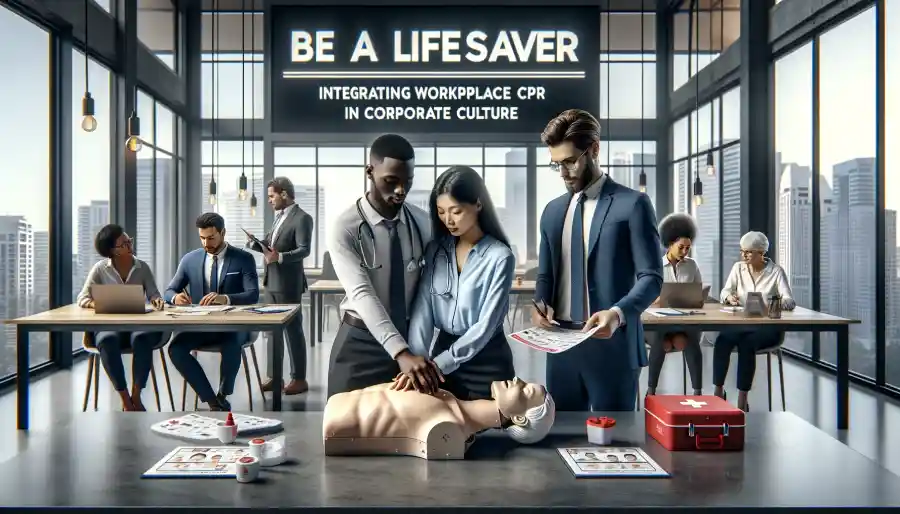Be a Lifesaver: Integrating Workplace CPR into Corporate Culture
Within the hustle and bustle of the corporate world, safety often takes a back seat to deadlines and meetings. However, one crucial skill that can’t be overlooked is Cardiopulmonary Resuscitation. Integrating it into the corporate culture is not just a regulatory requirement; it’s a commitment to the well-being of every employee. In this article, you will explore the importance of workplace CPR training and how it can be seamlessly woven into the fabric of corporate life.
1. The Urgency of Education
Unforeseen accidents and medical emergencies may occur at any moment, even within the confines of the workplace. Imagine a colleague suddenly collapsing due to a cardiac arrest. The minutes before professional help arrives are critical, and that’s where the value of CPR-trained individuals shines. CPR education in the workplace ensures that employees are equipped with the skills to respond swiftly and effectively in such emergencies, turning ordinary office spaces into prepared and robust settings where prompt interventions can be the determining factor in preserving life.
2. Creating a Safety-First Mindset
Integrating CPR into corporate culture starts with fostering a safety-first mindset. It’s about ingraining the idea that every employee has the potential to be a lifesaver. By prioritising safety, corporations demonstrate a commitment to the well-being of their workforce, creating an environment where employees feel valued not just for their skills at the desk but also for their ability to respond in times of crisis. This cultural shift transforms workplaces into communities that prioritise the collective welfare of their team members, cultivating a feeling of collective accountability and a joint dedication to maintaining safety.
3. Training Programs for Every Team Member
Making CPR training at the workplace accessible to all team members is key. From executives to interns, everyone should have the opportunity to learn this life-saving skill. Training programs can be tailored to fit into busy schedules, ensuring that productivity isn’t compromised while preparing the workforce for unexpected medical emergencies.
4. Building a Supportive Community
CPR training isn’t just about acquiring a skill set; it’s about building a supportive community within the workplace. When employees know their colleagues are trained to handle emergencies, a sense of security permeates the office. This approach centred around community encourages collaborative efforts, where each individual comprehends their part in upholding a work environment that is both safe and secure.
5. Making CPR Training Engaging
Gone are the days of monotonous safety lectures. Today’s CPR training at the workplace can be engaging and interactive. Incorporating simulations, hands-on practice sessions, and real-life scenarios can transform a potentially dull training into an exciting and valuable experience. By making the learning process enjoyable, employees are more likely to retain the information and feel confident in their ability to act when needed.
6. Leadership Setting the Example
The role of leadership is crucial in moulding the corporate culture. When executives actively participate in CPR training and emphasise its importance, it sends a powerful message. It shows that everyone, regardless of their position, is responsible for the entire team’s safety. Leading by example establishes a culture where safety is not just a policy but a shared value.
7. Regular Refreshers and Updates
Skills rust without practice. Regular CPR refreshers and updates ensure that employees remain proficient in life-saving techniques. Keeping the training current and relevant helps employees stay confident and ready to respond, turning workplace safety into a continuous learning journey.
Conclusion: A Safer and More Resilient Workplace
Integrating the innovative step of workplace CPR into corporate culture is not just a regulatory checkbox; it’s an investment in the health and well-being of the entire team. By fostering a safety-first mindset, providing accessible training for all team members, and creating a supportive community, corporations can transform their workplaces into safer and more resilient environments. When every employee is empowered to be a lifesaver, the office becomes a place of productivity and a sanctuary where colleagues look out for each other, ready to respond when it matters most.

